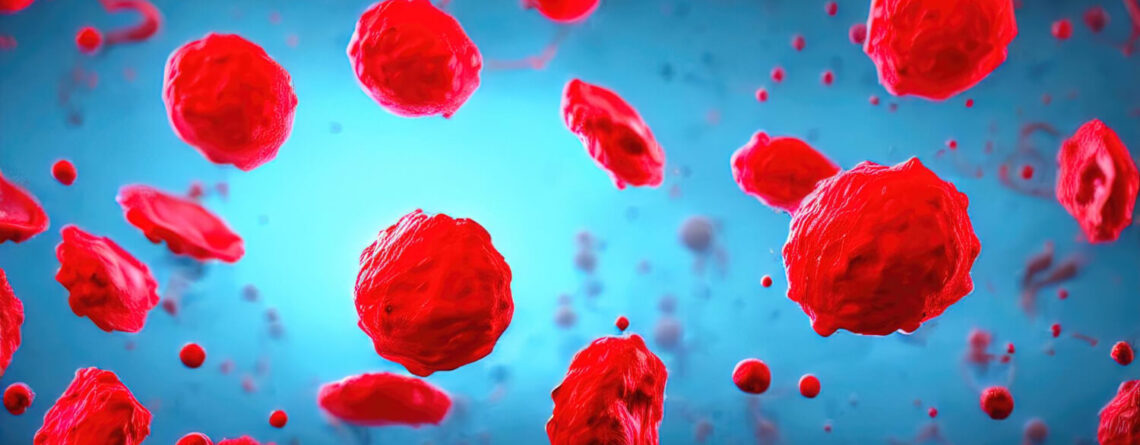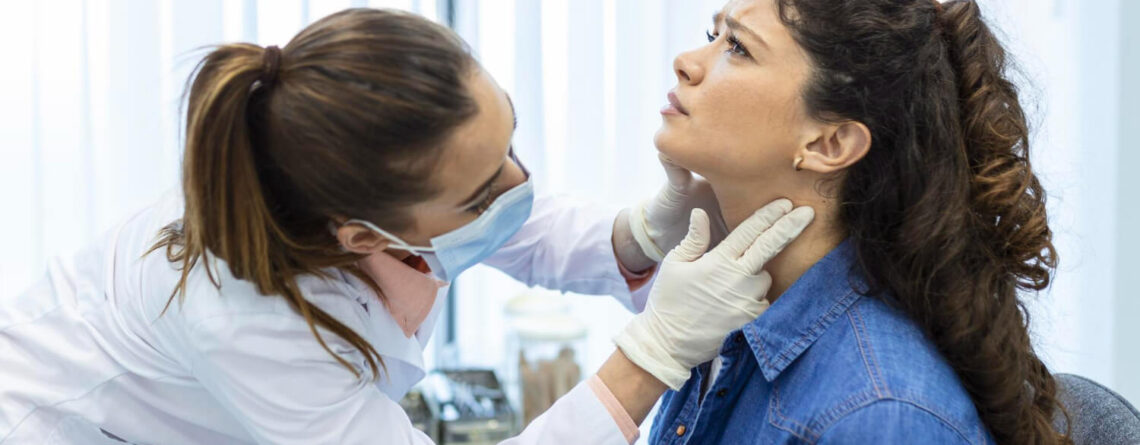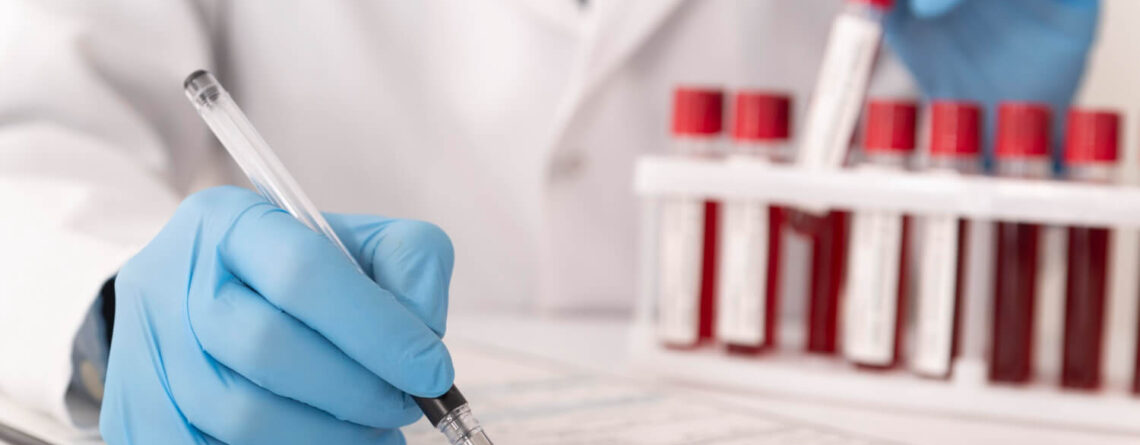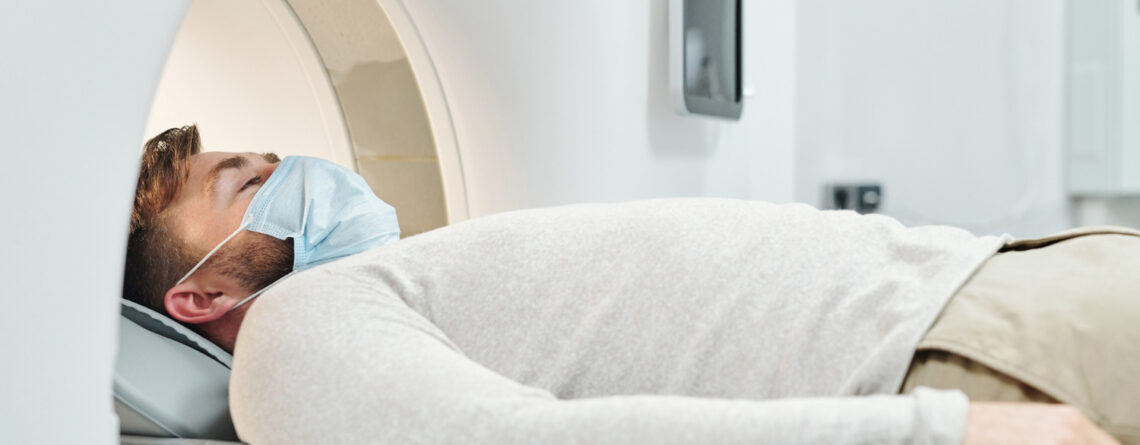Lymphomas are a whole group of malignant diseases characterized by tumor development from lymphoid cells, which are B-lymphocytes precursors, less often T-lymphocytes or natural killers (NK). The disease rarely occurs in children, mostly adults. Lymphoma is characterized by primary tumor formation, which makes it similar to solid tumors, unlike leukemia, when the lesion is immediately widespread.
There are two main types of lymphoma: Hodgkin's lymphoma (lymphogranulomatosis), non-Hodgkin's lymphoma.
The main difference between these types of lymphoma is the origin of the tumor cells. In Hodgkin's lymphoma they originate from the so-called Reed-Sternberg cells and Hodgkin cells, which take their beginning from B lymphocytes. Thus, the final diagnosis of lymphoma’s type is established only after a biopsy and material sample’s pathohistological examination. The cause of the disease is unknown. As a rule, people of young age (20-40 years old) get sick, the disease is rare among children.

Non-Hodgkin lymphomas are a heterogeneous group of lymphoproliferative diseases in which specific Reed-Sternberg and Hodgkin cells are not found in the biopsy.
Most often, lymphoma develops in a single lymph node (nodal forms), but there are also extranodal forms, when lymph node is not affected, but some internal organ, for example, the liver, spleen, brain, thyroid gland, skin, etc.
According to the nature of the course, relatively benign lymphomas are distinguished, which have a long course, do not have pronounced symptoms, and sometimes do not require any treatment at all. There are also aggressive forms of lymphoma that, without treatment, can kill a patient in a few weeks. There are also intermediate options.
The Maimonides Medical Center works under the patronage “Keren Or for our Child” the Charitable Foundation, so all our patients who need expensive treatment can receive financial assistance that will cover the treatment in full or in part, depending on the situation.
Lymphoma types and causes
Unfortunately, the direct cause of lymphoma is unknown, but there are several risk factors that increase the likelihood of such diseases:
- Adverse effects of environmental factors (some types of chemicals, benzene, herbicides, pesticides, ionizing radiation).
- Some viral infections influence (HTLV-1, EBV, HIV, HHV-8, HCV viruses).
- Certain bacterial infections impact (H. pylori).
- Autoimmune diseases, primary and secondary immunodeficiencies.
- Chemotherapy in anamnesis (especially in combination with radiation therapy).
- Heavy family history of lymphogranulomatosis (presence of this disease in relatives).
All non-Hodgkin lymphomas are divided, depending on the progenitor cells from which they originate:
1. Lymphomas from B-lymphocytes. These include, for example, diffuse large B-cell lymphoma, Burkitt's lymphoma, Waldenstrom's macroglobulinemia, anaplastic large-cell lymphoma, lymphoblastic lymphoma, etc.
2. Lymphomas from T-lymphocytes and NK cells. For example, peripheral T-cell lymphoma, large granular lymphocytic (LGL) leukemia, mycosis fungoides, others.
Depending on the pathogistological picture, 2 types of Hodgkin's lymphoma are distinguished (this is important to determine, since the drugs selection for treatment depends on the type):
1. Classic Hodgkin's lymphoma is a variant of nodular sclerosis (70–80% of cases), a mixed cellularity form, lymphocyte depletion, and enriched in lymphocytes. Most cases of classical variants are diagnosed in the early stages of the process, when upper cervical lymph nodes are most often affected. General symptoms are often absent.
2. Non-classical Hodgkin's lymphoma (nodular with a predominance of lymphocytes) is very rare, peripheral lymph nodes are affected, the course is slow and benign, usually one group of lymph nodes is affected. Well amenable to treatment, including relapses.
Lymphoma symptoms
Most patients with Hodgkin's lymphoma have a painless increase in cervical lymph nodes. Although the mechanism is unclear, pain can rarely occur in the affected area immediately after drinking alcoholic beverages, which is sometimes an early sign of the disease.
Other manifestations develop as the lymphoma progresses and spreads through the reticuloendothelial system, as a rule, in adjacent anatomical zones. Intense itching, resistant to conventional therapy, may appear quite early. Systemic symptoms include fever, night sweats, loss of appetite, leading to unmotivated weight loss.
Splenomegalyspleen increase,is often detected, hepatomegaly(Courvoisier symptom)is rare. In advanced stages of the disease, cachexia and general exhaustion of the body often develop.
Bone affection is often asymptomatic, but can cause osteoblastic vertebral lesions (the bone becomes very dense (sclerotic)and, less commonly, pain in osteolytic lesions and compression fractures. Damage to the central nervous system, stomach, and skin is rare, mostly in HIV-infected people.
Local compression by tumor masses of various anatomical structures and organs often causes the following symptoms and signs:
- Jaundice caused by intrahepatic or extrahepatic bile ducts compression.
- Localized swelling (lymphedema) of a specific limb secondary to lymphatic obstruction caused by a tumor.
- Severe breath shortness and wheezing against the background of tracheobronchial tree compression due to mediastinal damage.
- Dyspnea, cough and/or chest discomfort due to lung parenchyma infiltration.
- Epidural invasion with bone marrow compression can lead to paraplegia development.
- Horner's syndrome and laryngeal paralysis indicate the cervical sympathetic nerves and the recurrent laryngeal nerve compression by enlarged lymph nodes.
- Spinal cord roots compression leads to persistent neuralgia.
Most patients with non-Hodgkin's lymphoma have the following symptoms:
- Asymptomatic peripheral lymphadenopathy (painless persistent enlargement of peripheral lymph nodes).
Enlarged lymph nodes can be elastic and individual, which merge into conglomerates with the course of the disease. Affected lymph nodes are usually painless, in contrast to painful palpation of lymph nodes in viral infections. In some patients may be observed local lymph node affection, but most patients have multiple areas affection. During primary examination, cervical, axillary, inguinal and femoral lymph nodes should be carefully examined for their affection.
In some patients, affected mediastinal and retroperitoneal nodes press on adjacent structures, causing symptoms. The most frequent are:
- Superior vena cava compression (SVC): breath shortness and facial swelling (superior vena cava syndrome).
- External bile ducts compression: jaundice.
- Ureters compression: hydronephrosis.
- Intestinal obstruction: vomiting and intestinal obstruction.
- Lymphatic drainage violations: pleural or peritoneal effusion, lymphedema of the lower extremities.
In some variants of non-Hodgkin's lymphoma, the skin is affected. B-cell non-Hodgkin's lymphoma can affect the scalp (follicular non-Hodgkin's lymphoma) or legs (large cell non-Hodgkin's lymphoma) , usually causing erythematous nodules that are slightly raised above the skin. In the cutaneous form of T-cell non-Hodgkin's lymphoma, skin lesions can be in the form of diffuse erythema, or non-healing papules, plaques or tumors.
In some patients, most often with aggressive lymphomas, the initial manifestations of the disease are general symptoms (for example, fatigue, fever, night sweats, weight loss).Such patients may not notice lymphadenopathy, or they may not have external signs of the disease, so they need a CT or positron emission tomography (PET) scan to detect the lesion.
Anemia is initially present in some patients and develops over time in many. It can be caused by bleeding from gastrointestinal lymphoma with low or no platelets, hemolysis from hypersplenism or hemolytic anemia, bone marrow infiltration by lymphoma cells, or bone marrow suppression from chemotherapy or radiation therapy.

Diagnostic methods
As you know, the earlier the diagnosis of a malignant disease is established, the better prognosis and treatment result. Therefore, high-quality and quick diagnosis is an extremely important stage.
Maimonides Medical Center applies only modern equipment of an expert class, all our doctors perfectly master all examination methods of lymphoma suspected patient, are able to interpret the received data without error. All of this helps them to create a modern, individual and effective treatment plan.
As a rule, the set of diagnostic tests includes:
- Laboratory tests : general and biochemical blood analysis, tests for different infections presence – HIV, viral hepatitis B and C, Epstein-Barr virus, cytomegalovirus.
- Neoplasm biopsy . Affected lymph node or organ biopsy with followed histological and immunohistochemical examination of biopsy specimens.
- Nodal and extranodal lesions detection using CT with contrast, PET-CT, MRI.
- Sometimes, we need to provide different other studies For example, bone marrow aspiration and trepan biopsy, various endoscopic examinations(bronchoscopy, cystoscopy, laparoscopy, thoracoscopy, gastroscopy),lumbar puncture and analysis of cerebrospinal fluid, etc.
Molecular genetic tests are used to identify certain types of lymphomas, and for personalized immunotherapy(biological, targetedselection. An example of such modern diagnostics are test systems for molecular genetic testing. For example, the Foundation One та Caris Molecular Testing.
We send all materials after the biopsy to the world's best pathogistological laboratories (Israel, Germany, USA).Thanks to such double checks, we are absolutely sure of diagnosis correctness and effectiveness of the selected treatment tactics.
All necessary diagnostic procedures can be performed directly in the clinic, without leaving Ukraine.

Lymphoma modern treatment
One of the important advantages in malignant blood diseases treatment at Maimonides Medical Center is the application of a comprehensive approach to each individual clinical case. In the fight against the disease, the doctor uses the entire available arsenal of methods.
Therapy is always a combination of two, three, or even more methods. As a rule, the treatment regimen includes systemic drug chemotherapy in combination with radiation therapy and hematopoietic stem cell transplantation. In some cases, certain innovative treatment methods are added to the treatment program(targeted drugs, immunobiological drugs, etc).
In lymphoma complex treatment, the following methods are used:
- Observation and watchful waiting (for those lymphomas that develop slowly and are relatively benign).
- Chemotherapy.
- Radiation therapy (most often prescribed to patients with a limited stage of the process and sometimes to patients with an advanced stage of the disease).
- Immunotherapy (for instance, monoclonal antibodies targeting CD20, CD19, or CD79, or chimeric antigen receptor T cells [CAR-T cells]).
- Targeted drugs (for example, BTK [Bruton's tyrosine kinase] inhibitors, PI3K [phosphoinositide 3-kinase] inhibitors, Cereblon inhibitors).
- In some cases transplantation of hematopoietic stem cells (autologous or allogeneic).
The choice of treatment regimens depends on the type of lymphoma and malignant cells. For patients with slowly progressive or non-progressive lymphoma and no significant signs or symptoms, a watch-and-wait approach (stopping treatment with close observation) may be used.
Chemotherapy involves taking special drugs (intravenously/in the form of tablets). Getting into bloodstream, the drugs spread throughout the body and destroy cancer cells. In Maimonides Medical Center chemotherapy effectiveness is guaranteed by proven drugs applying and a clear selection of dosages in accordance with international protocols. Also, our doctors additionally prescribe drugs to minimize side effects.
Radiation therapy is prescribed for some types of lymphoma alone or in combination with chemotherapy, or in combination with high-dose therapy if a bone marrow transplantation is necessary. Thanks to application of modern equipment, the impact on the tumor is provided with maximum accuracy. Due to this, the risk of healthy tissues affecting is minimal.
In case of ineffectiveness of other methods, high-dose chemotherapy with bone marrow transplantation is performed . In order to this increased doses of chemotherapy drugs are prescribed. But in treatment process, not only diseased cells are destroyed, but also healthy cells of bone marrow, which ensure the hematopoietic function, are damaged. A bone marrow transplantation is required for its recovery in the future. The procedure is provided in specialized departments that have innovative equipment at their disposal. Surgeries are conducted by highly qualified doctors who regularly improve their qualifications in American and European clinics.
There are 2 main types of bone marrow transplantation. Depending on the source of the donor material, they are – autologous and allogeneic.
- Autologous transplantation.
The donor is the patient himself. At the same time, the selection of stem cells is performed before any treatment. And after a course of chemotherapy, radiation therapy, targeted drugs, and immunobiological treatment, healthy bone marrow cells are returned to the patient. They successfully populate the bone marrow and normal blood formation is restored.This method is safer, as rejection reactions do not develop, because the material is 100% native to the recipient. Unfortunately, this treatment is suitable only in cases where the tumor process does not initially spread to the patient's bone marrow. In the case of diseases with primary bone marrow damage, own cells are not suitable for transplantation, and a donor must be sought.
- Allogeneic transplantation is the cells transplantation from a donor (relative or unrelated). This method is best suited for bone marrow primary damage disease treatment, for example, leukemia
Immunotherapy is an innovative technique aimed at activating the patient's immune system to fight cancer. In this case special drugs which selected individually for each patient are used during the treatment. The Foundation One Heme testis conducted beforehand, which allows us to choose the most effective treatment. During the test, tumor tissues are analyzed and genetic mutations are determined.
CAR-T cells therapy is the latest innovation in struggle against Hematology Oncology diseases, including lymphomas. Production of such drugs requires modern genetic engineering laboratory and highly qualified personnel. CAR-T cells are made individually for each patient.
To do this, a blood sample is first taken from the patient, from which leukocytes are separated. Further, these leukocytes are modified through genetic engineering in such a way that chimeric antigen receptors (CAR) appear on their surface in accordance with the type of tumor cells found in the same patient. Further, such "modernized" cells are multiplied by cloning and returned to the patient's blood, where they actively "track" tumor cells down and destroy them.
Targeted therapy is a modern treatment method that can be used in all categories of patients. Monoclonal antibodies are most often appear as active substance. This is a special class of proteins that binds and destroys exclusively tumor clones. They interact with certain types of receptors on the surface of malignant cells, for example, monoclonal antibodies against CD20(rituximab, ofatumumab and obinutuzumab)and CD52(alemtuzumab).
Antibodies do not interact with healthy cells, due to which the risk of complications developing is minimized. This type of treatment can be used even in debilitated patients who have not responded to standard treatment protocols.
For some patients, participating in a clinical trial may be the best treatment option. Clinical trials use new drugs or treatments schemes to study their effectiveness. They are closely monitored and you can exit them at any time. But such clinical trials are not suitable for everyone. If you are interested in participating, talk to your doctor about your options. All our patients have the opportunity to participate in clinical trials of certain types of treatment, if they meet the stated criteria.
In each individual case, the decision on the combination of certain treatment methods is made jointly by a team of specialists. Each person and their disease is different, so our doctors, relying on their experience in lymphoma treatment, often go beyond standard protocols, changing treatment regimens and doses of necessary drugs, radiation techniques in order to obtain the best possible results for their patients.

